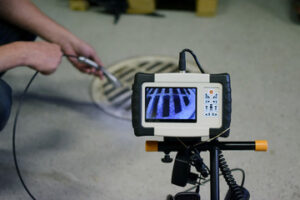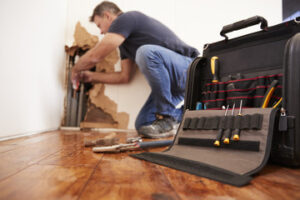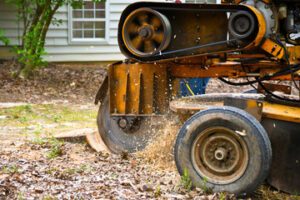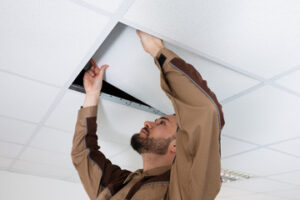Drywall Installation Naperville is relatively easy, but there are a few important things to remember. Having these in mind will save you some headaches and extra work.
First, sit the end of each panel halfway over a stud. This helps to add strength to your wall and reduce cracks along seams.
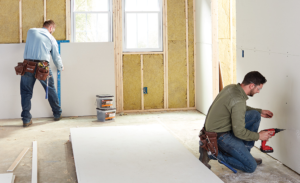
Drywall is an important home improvement material that can enhance energy efficiency and provide fire resistance, but a professional installation requires careful preparation. By learning the basics of drywall installation and following best practices, homeowners can reduce the risk of costly mistakes and ensure a smooth finish.
Preparation includes clearing the space, gathering tools and materials, installing blocking, and protecting floors and other surfaces. It also involves removing any existing wall coverings and ensuring that the walls are structurally sound. This ensures that the drywall will adhere well to the wall or ceiling, resulting in a professional-looking end result.
In addition, homeowners should familiarize themselves with the different types of drywall to determine which one is right for their project. Once the type has been determined, it’s helpful to calculate how much drywall is needed. By using a tape measure, a T-square, and a utility knife to mark where each cut will be made, homeowners can maximize the use of full sheets and minimize waste.
Before cutting, it’s important to carefully examine the framing for bowed or twisted studs. While a visual inspection is usually enough to spot these problems, a straightedge can be used for more thorough examination. If a stud is badly bowed or twisted, it should be straightened or replaced.
When it comes to hanging drywall, it’s best to get help from a friend or hire a professional if possible. Working alone can be difficult, especially when the drywall is heavy. Additionally, a professional can help homeowners avoid common mistakes that beginners often make during drywall installation such as failing to tape and finish the seams.
Once the drywall is hung, the next step is to cover and finish the seams and screw holes with joint compound (also known as mud). To tape the joints, first apply a coat of mud to the surface and let it dry completely. Then, apply a layer of drywall tape over the seams and smooth it out with a drywall knife. Finally, apply a second coat of mud and sand lightly between coats to achieve a smooth finish.
Cutting
Before cutting drywall, lay out the sheet on a flat, stable surface. If possible, do this in a well-lit area with good lighting. You can make the cuts before you begin hanging the drywall to save time, but it’s usually best to cut as you go along so that you don’t waste any material. Use a tape measure and a T square to mark your lines for cutting. When marking for window and door openings, be sure to leave 1/8 inch of extra space at the edge of the frame. A utility knife is a good tool for making small cuts. A keyhole saw or circle cutter is useful for cutting spaces for outlets and light switches.
If you’re going to use a power tool for the cutting, wear a dust mask. This will keep the dust from contaminating your lungs and also protect you from anything behind the wall that could be damaged by a saw.
When cutting drywall, start at one end of the line and work your way across. Use steady pressure to avoid tearing the paper. When you reach the other end of the line, turn the drywall over and use your blade to cut through the paper. Continue this process until you’ve cut through all of the drywall.
You can also score and cut drywall while it’s on its side by using a utility knife. This method is quicker than cutting with a power saw and doesn’t require any extra tools.
If there’s a spot on the wall where you can’t get a drywall cut with a knife, try using a power tool to cut through the paper and the underlying drywall. Just be sure to use a wide blade so you don’t tear through the structural drywall.
Once the drywall is cut, run a putty knife gently over all of the screw or nail heads to set them below the surface. This makes the tape job much easier and prevents the fasteners from showing through the finished wall. This is also a great time to drive in any missing screws or nails.
Hanging
When all the cutting is done, it’s time to start hanging the drywall. Start at the top of the wall, accounting for any window or door openings and other framing details. It’s a good idea to have someone help you lift the drywall sheets, since they can be quite heavy.
Once the first sheet is in place, screw it to the studs. Use a power drill and ring drywall screws, which will hold the drywall securely without breaking or creating too big of a hole to patch later. It’s a good idea to run a stud finder before starting so you know exactly where the studs are, and you can also mark them with a high-visibility marker.
After the drywall is secured, you’ll want to finish it by adding paper or fiberglass-mesh tape at all the seams and corners, followed by the typical three layers of joint compound. This makes the surface of the drywall smooth and ready to paint.
If the drywall is being hung over a ceiling, it’s a good idea to install wood backers (or OSB boards cut in about 4-foot strips) to make sure there are no dents or bumps in the drywall. This will protect the ceiling from moisture and mold, as well as prevent the drywall from pulling away from the ceiling joists when the paint is applied.
One other tip that can save you a lot of grief later on is to get a couple pieces of drywall scrap and screw the end of the sheet being hung to them. This will give you a 3” overhang to work with, and if you happen to screw it into a stud it’ll be nice and tight.
Finally, always drag a putty knife over every screwhead to set it below the surface of the drywall. It’s a common installation mistake to forget this step, and it will create a mess for the taper when you come to finish the wall. Plus, if you don’t set the fasteners right, they may eventually pop out and ruin the wall.
Finishing
The finishing stage is where drywall truly shines. It’s a critical step that takes the bare-bones room from unfinished and unsightly to clean, finished and beautiful. Taping and mudding are a labor-intensive process that requires patience and attention to detail.
A well-trained crew that works seamlessly can finish a drywall job in half the time of an inexperienced crew and produce a higher quality result. To minimize drywall installation costs, do your prep work yourself, use standard sizes of drywall sheets and schedule your project during off-peak times.
Drywall is available in a variety of finishes, each designed to accommodate different types of wall coverings and levels of visibility. The appropriate level depends on the room’s purpose and usage and may be influenced by aesthetic goals.
Level 1 – No taping or finishing, which provides basic smoke and sound control for areas not visible to the public, such as garages and storage spaces. Drywall with tape embedded in joint compound at seams and corners, but not sanded or smoothed.
Level 2 – A single coat of mud applied over the tape, with a hand or power sander to smooth the coat. This level is appropriate for a clean, utilitarian space, such as a workshop or basement that will be painted.
Level 3 – Similar to Level 2, but with all flats, butts and angles coated twice. Corners are boxed, with the corner bead both coated and smoothed with a wheeled box tool. This level is typically used for areas that will be textured, such as garages or service corridors.
Level 4 – All of the above, plus a skim coat that is smoothed across all surfaces. This level is ideal for a finished room that will be painted or wallpapered, and helps minimize joint photographing and fastener visibility.
